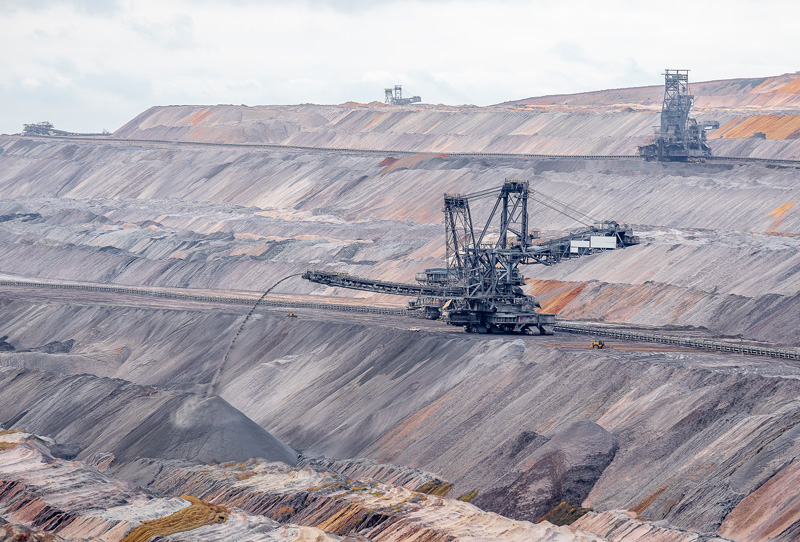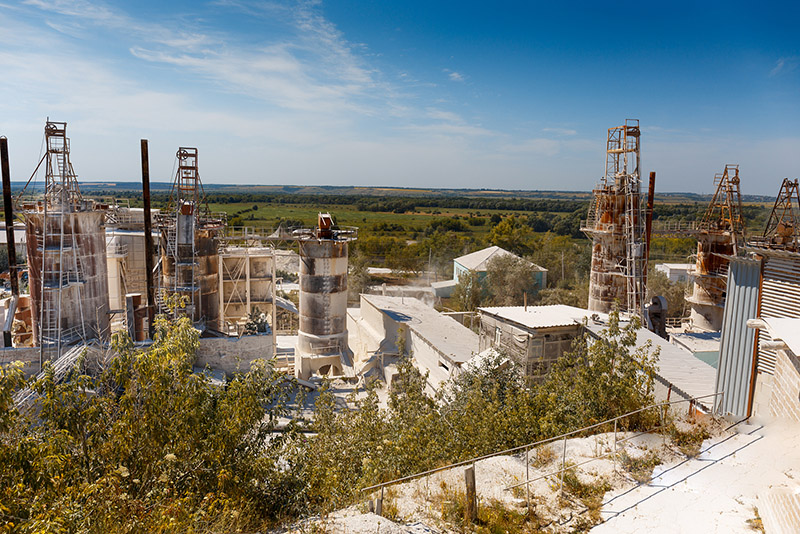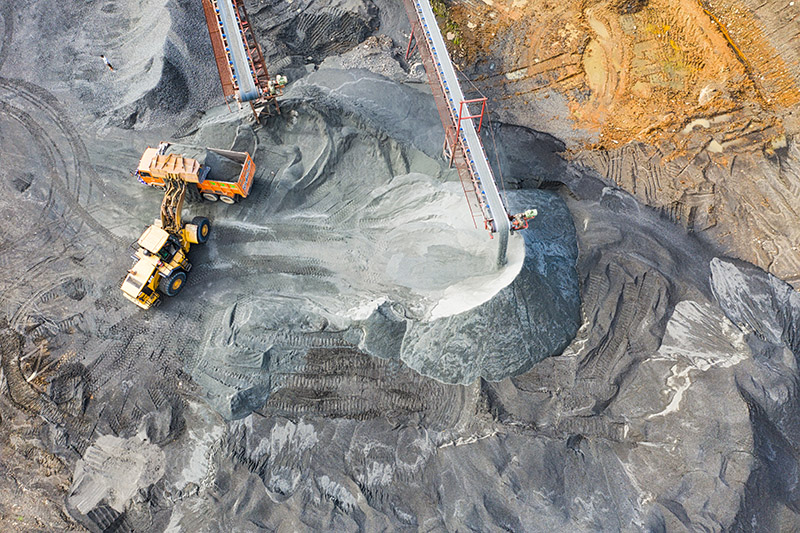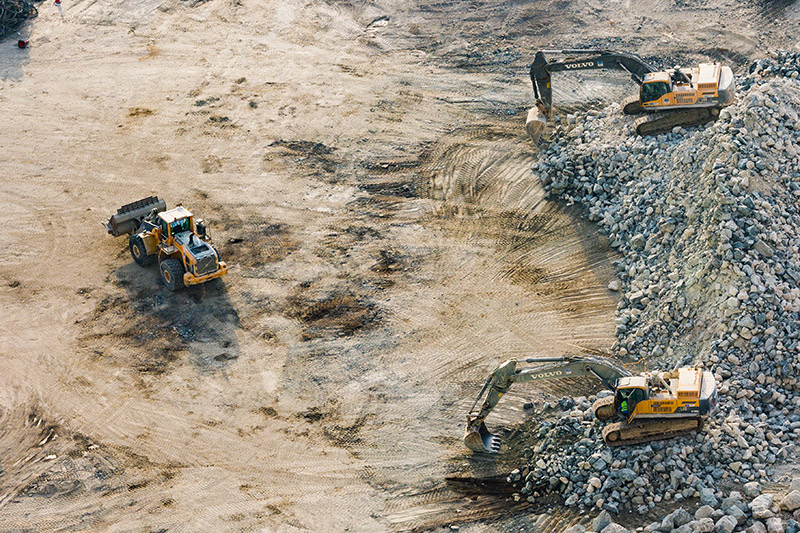Lithium is the most commonly used metal for new energy applications in the world. In the global electric vehicle industry, lithium batteries are widely used. Although the lithium battery as a new energy has a significant development status. But it has to be mentioned that many people remain concerned about the impact of lithium resource mining on the environment.

Although lithium batteries are used as clean energy batteries, the mining and extraction process of lithium resources produces pollutants and has a great impact on the surrounding environment. The increase in demand for lithium batteries has also led to an increase in the demand for lithium resources mining in various countries. However, lithium mining conditions are not good, and the impact of lithium resource mining on the environment is also related to future development. Therefore, the extraction process of lithium ore has become a major problem.
How is lithium extracted
Lithium ore is generally divided into two types: spodumene and brine type. The mining process is mainly divided into spodumene open-pit mining and salt lake brine extraction of lithium. It has to be mentioned that since the 1990s, China has become a major country in the lithium industry. But there is a large technological gap in lithium ore mining. With the entry of foreign advanced technology of salt lake brine extraction, China has improved the technological progress of lithium extraction from salt lakes.
Extraction process from lithium ore
In nature, lithium-bearing ores mainly include lepidolite, spodumene and feldspar. The methods of extracting lithium and other valuable metals from lithium ore mainly include limestone method, sulfuric acid method, chloride method and pressure cooking method.
1.Limestone calcination method
The advantage of the limestone calcination method is that it is very practical and can be used for almost all lithium minerals. The disadvantage is that the lithium content in the leaching solution is low, the evaporation energy consumption is large, and the lithium recovery rate is low.
CITIC Guoan used the calcination method to extract lithium in 2006, but it was suspended due to serious environmental pollution, so this method is currently not applicable.
2. Sulfuric acid method
The advantages are low energy consumption and high lithium concentration in the leaching solution, so the recovery rate is also high, but the disadvantages are also obvious. The subsequent purification load is heavy, technically difficult, and a large amount of sulfuric acid is used, which requires high anti-corrosion performance of the equipment.
3. Chlorinated Roasting
The advantages are that the lithium conversion rate is high, the energy consumption is low, and the roasting time is short. However, there are also disadvantages such as higher requirements for equipment anticorrosion in the roasting process, the use of sodium carbonate to precipitate lithium in the later stage, and the increase in cost.
4. pressure cooking
The pressure cooking method is similar to the sulfuric acid method. This method has a shorter process and lower cost, but has stricter requirements on process conditions and mineral types.
The common feature of the above methods is that the cost of lithium extraction is very high, generally 50-60k/ton, and lepidolite is more expensive to extract lithium, which is estimated to be above 60,000/ton. How to reduce the cost of lithium extraction through technological innovation and transformation is the biggest problem and restriction of ore lithium extraction technology. Extracting lithium from brine is the current common way.

Extraction technology of salt lake brine
Lithium is widely believed to be extracted from lithium mines, but in fact, more than 70% of the world’s lithium is extracted from mineral-rich salt lakes. The methods of extracting lithium from salt lake brine mainly include ion exchange method, calcination leaching method, nanofiltration membrane separation method, solvent extraction method, etc.
1. Ion exchange method
In recent years, my country’s salt lake brine mining technology has been greatly improved. For the ion exchange method alone, different mining companies will have different results.
The ion-exchange method has the advantages of high selectivity and environmental friendliness, and is especially suitable for the extraction of lithium from low-concentration brine and seawater, but the preparation process of ion-exchange adsorbents is relatively complicated.
The performance of the adsorbent determines the efficiency of the ion-exchange adsorption process. Currently, various types of adsorbents are put into use by various companies. The advantage is that in the process of extracting lithium from high magnesium-lithium salt lake brine, the production efficiency of lithium extraction is high, no environmental pollution, and the process is mature and reliable. The disadvantage is that there are certain limitations in the use of carbonated salt lakes.
2. calcination leaching method
The calcination leaching method realizes the extraction of lithium carbonate through calcination, leaching, precipitation and other processes. This method is conducive to the comprehensive utilization of resources such as lithium and magnesium, and the consumption of raw materials is low.
However, the extraction of magnesium complicates the process, the equipment is seriously corroded, the amount of water that needs to be evaporated is large, the energy consumption is large, and there are problems of environmental pollution. At present, environmental protection is strictly controlled. Under the regulatory environment, it faces greater environmental risks.
3. Nanofiltration membrane separation method
Membrane separation technology has the functions of separation, concentration, purification and refining, and has the characteristics of high efficiency, energy saving, environmental protection, molecular-level filtration and simple filtration process and easy control. Among them, nanofiltration membrane separation method is a new type of membrane separation technology that has been developed and researched at home and abroad in recent years. Dongtai Jiner in Qaidam Basin is mainly suitable for nanofiltration membrane separation technology for industrial production.
4. solvent extraction
The core of the extraction method is the extractant, but the extractant has serious corrosion to the pipeline and serious damage to the environment. Therefore, how to choose an environmentally friendly extractant is the main research direction of the future industry.
At present, the high content of organic matter in a large amount of waste liquid will cause great pollution to the salt lake, and the extraction method cannot meet the industry requirements under higher and higher environmental protection standards, so it is not feasible.
5. other methods
In addition to the above methods, there are also a variety of methods for lithium extraction, such as precipitation method, salting out method, resin adsorption method, Glauber’s salt cycle method, electrochemical method, carbonization method, liquid membrane method, conversion method, etc.
In the past decades of development and research, China’s extraction process has been continuously improved and perfected, but the overall direction of improvement is to protect the environment and reduce costs, which is conducive to the healthy development of the lithium resource industry.

Environmental Impact of Lithium Development/Extraction
In the era of vigorous development of new energy, when lithium is refined, pollutants will be generated due to different processes. The above-mentioned calcination and leaching method will generate a large amount of acid mist and fluorine-containing gas during the spray drying process, which causes the problem of environmental pollution.
The membrane separation method has simple steps, low reagent consumption, clean and pollution-free, but the membrane cost is high, the problems of membrane poisoning and short service life also need to be solved, and this method requires a lot of water, which will undoubtedly cause a lot of water pollution.
The extraction process of spodumene will produce pollutants such as exhaust gas, waste water, solid waste and so on.
Waste gas is mainly dust generated during crushing, screening, unloading of raw ore and transportation; wastewater is mainly concentrated dewatering wastewater after flotation, tailings sedimentation and concentrated wastewater; there are also solid wastes such as tailings slag.
Environmental Impact of Lithium Mining
Most papers point out that the raw brine produced during the mining of lithium mines in salt lakes can change the physicochemical properties of the soil, leading to soil salinization. Large-scale salt lake mining will also aggravate the erosion of soil, water and soil in the area, and even change the original topography and destroy the local landscape environment.
This is mainly manifested in the damage caused by the construction of roads during the infrastructure construction period, the construction of salt fields and various buildings during the mining period, which cannot be repaired in the short term, and most of the salt lake lithium mining areas mentioned above have harsh climates but good ecology. Therefore, the ecological restoration of the mining area will also be difficult.
Although the mining method of spodumene mine is hole mining, which has little impact on the surface ecological environment, the beneficiation requires a large amount of land, which seriously damages the local vegetation, and may even change the composition and fertility of the soil. Large-scale earthwork development is likely to cause disasters such as soil erosion and landslides.
In addition, in the spodumene beneficiation process, there will be multiple processes such as crushing and screening. These processes will generate a large amount of dust, and the dust will form air pollutants in the air. Although local mining companies will use some dust collection treatment measures.
However, usually this kind of dust spreads seriously, the collection rate is not high, and the current air pollution index has not yet formed exact data, but some scholars have raised relevant questions, questioning whether the local air pollution meets the standard.

Summarize
Finally, the water consumption of lithium mining is enormous. Even in water-rich areas, there is a good chance that toxic chemicals from lithium mining will leak from lithium evaporative ponds into the water supply. Foreign studies have shown that lithium mining can affect fish as far as 150 miles downstream. Whether the lithium industry will also pollute the irrigation of crops is also a question for environmentalists.
The existence of the above problems also restricts the factors for many countries to develop their own lithium batteries. From environmental considerations and technical process considerations. If there are not enough process requirements, it will cause damage to the local environment caused by domestic production of lithium. This is also the reason why many countries refuse to develop lithium mining in their own countries.
China is continuously raising the entry threshold for lithium mining and dressing companies, or increasing environmental protection review and supervision of lithium mining projects. Increase the ecological management of lithium mining areas, increase investment in local environmental protection treatment facilities, etc. Only by using various means to reduce the damage to the ecological environment can the road of new energy go further and longer.
Source – RayMall





2 thoughts on “The impact of lithium mining on the environment, what’s behind clean energy?”
Hi! W᧐uld you mind if I share yoսr blog with my facebook group?
There’s a lot of folks that I think would reallү enjoy your content.
Please ⅼet me know. Cheers
Mʏ webpage … defray
Hello!
Thank you so much for your interest in sharing my blog with your Facebook group! I would be absolutely delighted for you to do so. I’m glad to hear that you think others would enjoy the content.
Feel free to share the link, and if there’s anything specific you’d like to highlight or if you have any questions, please let me know.
Cheers!